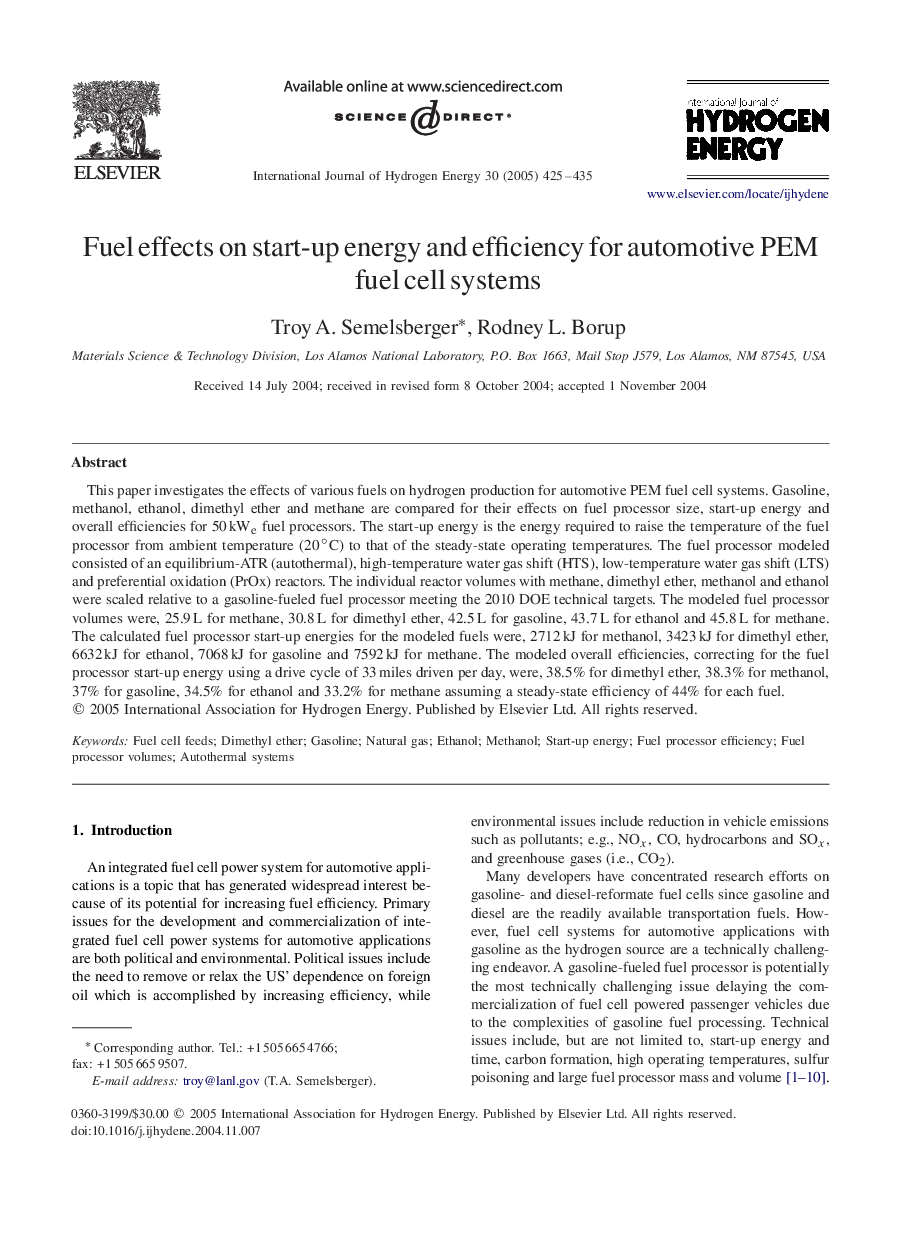| Article ID | Journal | Published Year | Pages | File Type |
|---|---|---|---|---|
| 9759340 | International Journal of Hydrogen Energy | 2005 | 11 Pages |
Abstract
This paper investigates the effects of various fuels on hydrogen production for automotive PEM fuel cell systems. Gasoline, methanol, ethanol, dimethyl ether and methane are compared for their effects on fuel processor size, start-up energy and overall efficiencies for 50 kWe fuel processors. The start-up energy is the energy required to raise the temperature of the fuel processor from ambient temperature (20 °C) to that of the steady-state operating temperatures. The fuel processor modeled consisted of an equilibrium-ATR (autothermal), high-temperature water gas shift (HTS), low-temperature water gas shift (LTS) and preferential oxidation (PrOx) reactors. The individual reactor volumes with methane, dimethyl ether, methanol and ethanol were scaled relative to a gasoline-fueled fuel processor meeting the 2010 DOE technical targets. The modeled fuel processor volumes were, 25.9 L for methane, 30.8 L for dimethyl ether, 42.5 L for gasoline, 43.7 L for ethanol and 45.8 L for methane. The calculated fuel processor start-up energies for the modeled fuels were, 2712 kJ for methanol, 3423 kJ for dimethyl ether, 6632 kJ for ethanol, 7068 kJ for gasoline and 7592 kJ for methane. The modeled overall efficiencies, correcting for the fuel processor start-up energy using a drive cycle of 33 miles driven per day, were, 38.5% for dimethyl ether, 38.3% for methanol, 37% for gasoline, 34.5% for ethanol and 33.2% for methane assuming a steady-state efficiency of 44% for each fuel.
Related Topics
Physical Sciences and Engineering
Chemistry
Electrochemistry
Authors
Troy A. Semelsberger, Rodney L. Borup,
